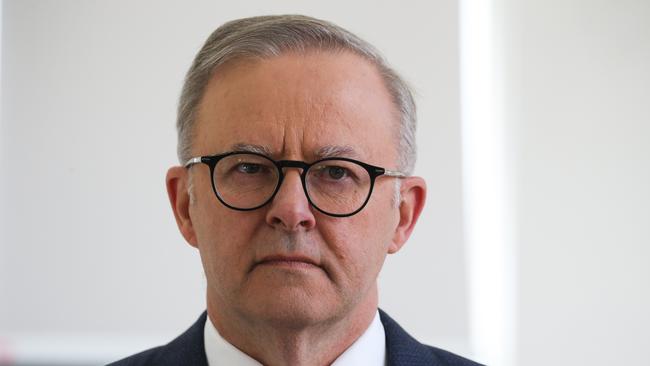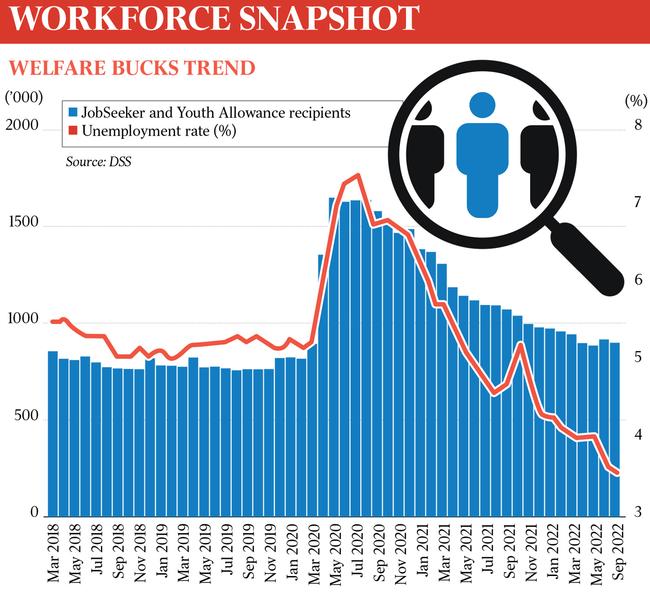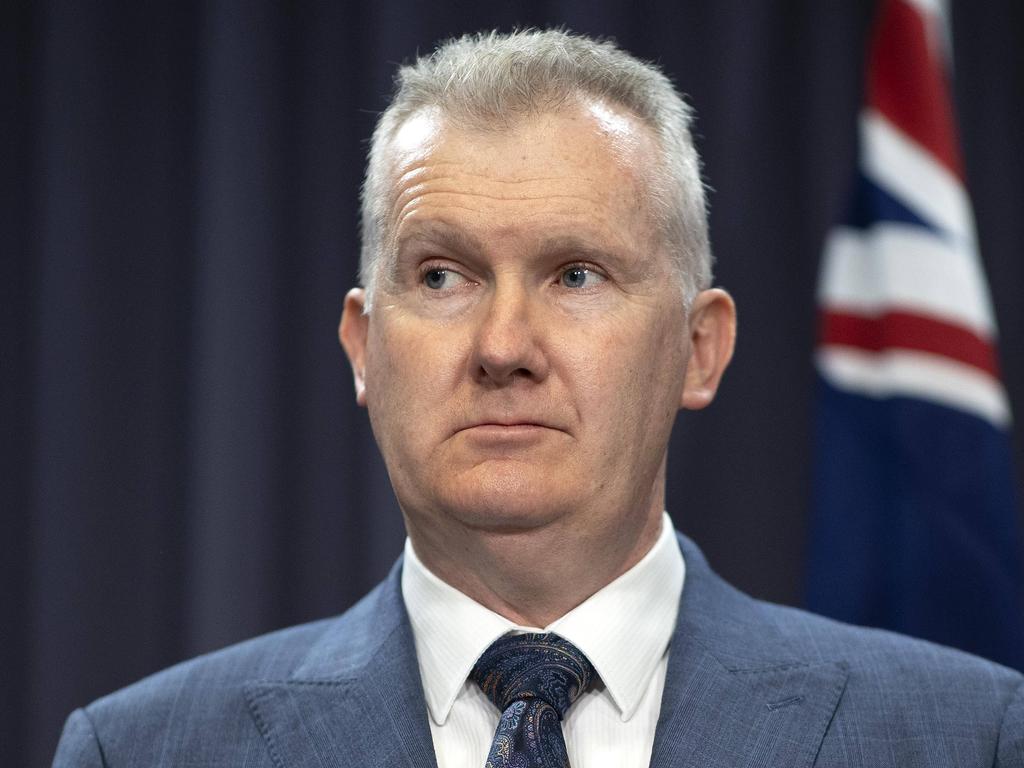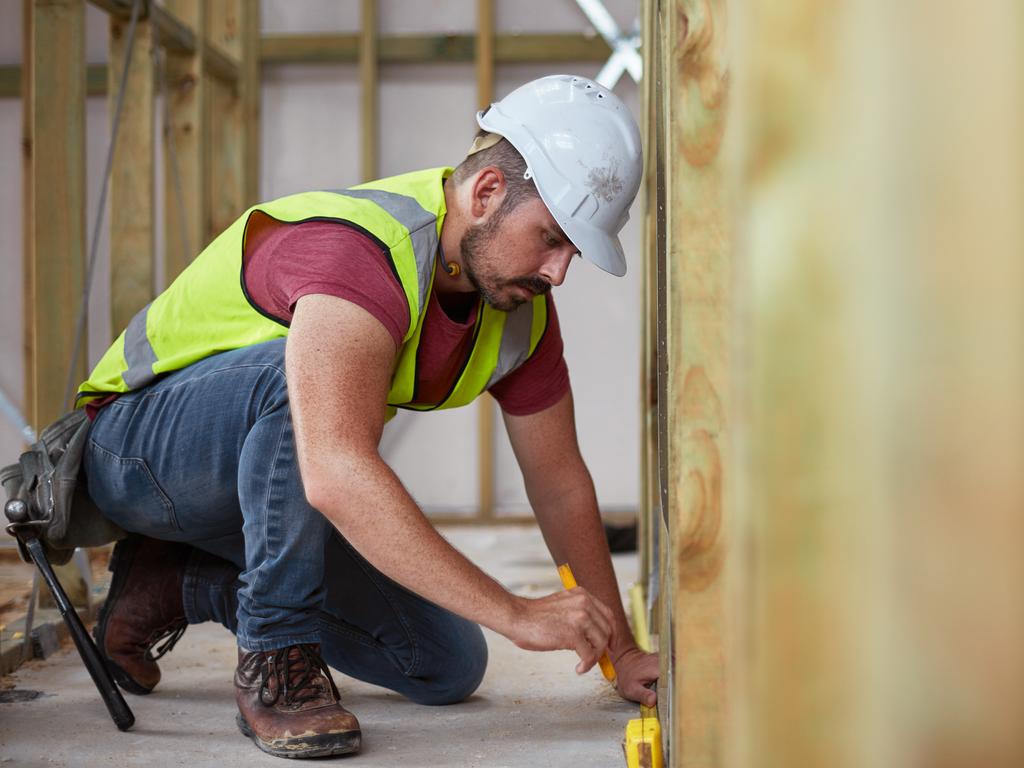Hidden jobless: Welfare payments defy record low unemployment
Welfare payments are stuck at levels higher than before the pandemic, driven by more older, unhealthy Australians on JobSeeker.

Welfare payments are stuck at levels higher than before the pandemic, driven by more older, disabled and unhealthy Australians on JobSeeker, despite record low unemployment.
Anthony Albanese’s Jobs and Skills Summit next week will focus on creating new pathways via TAFE and apprenticeships to assist people off welfare and into work, but there are concerns about how long it will take to upskill Australians for available jobs.
New Department of Social Services data reveals more than 892,000 people are receiving JobSeeker and Youth Allowance (other) payments, with the average duration of a person on income support now 293 weeks.
The Australian can reveal that the proportion of mature age JobSeeker recipients increased from 18 per cent in July 2012 to 29 per cent last month. The average duration of a mature age recipient on income support is now 344 weeks.
Another challenge for the Albanese government is how best to support 41 per cent of people on JobSeeker payments who have a partial capacity to work. About 22 per cent of unemployed Australians report average earnings of $774 a fortnight.
After the Australian Bureau of Statistics last week revealed there were more job vacancies than unemployed people, Social Services Minister Amanda Rishworth said she would use the summit to help “lift workplace participation and reduce barriers” for jobseekers.
“Of the roughly 890,000 currently on JobSeeker or Youth Allowance, around 80 per cent of these are classified as long-term unemployed (on payment for more than a year), around 40 per cent have a partial capacity to work (for example, because of disability or health concerns),” Ms Rishworth told The Australian.

“Around 14 per cent are Indigenous and 18 per cent are from a culturally and linguistically diverse background.
“Indications are that these cohorts face significant barriers to entering the workforce, for a variety of reasons, and my goal is to work with participants at the summit to address how we can collectively do better at finding and securing opportunities for these people to work.”
Ms Rishworth will hold a social security roundtable this week and held a disability employment roundtable on Monday with stakeholders including Australian of the Year and Get Skilled Access founder Dylan Alcott.
She said the opportunity to provide jobseekers with access to secure work at a time of severe labour shortages must be seized.
“With such low unemployment across the board right now and employers calling out for staff, business, government and industry need to work together to make sure the right support is there to help jobseekers find and stay in work,” she said.
Compared with July last year, when the Covid-19 Delta variant was peaking, JobSeeker and Youth Allowance (other) recipients have fallen by 193,000 but they remain higher than February 2020 levels when the unemployment rate was 5.1 per cent.
While lifting the migration cap and getting more foreign workers into the country has dominated debate ahead of the summit, the Albanese government is moving to address the disconnect between the unemployed and a labour market crying out for workers.

The Prime Minister on Monday flagged that his government was determined to make sure that as many unemployed Australians were given the best opportunity to participate in the hottest labour market in decades.
“We need to look at employment services and the way they have been operating,” the Prime Minister said. “We need to make sure that no-one is left behind. And that means whatever we can do to get long-term unemployed into work with training, we need to do.
“The advice from both long-term unemployed, but also from employment services providers, is that the structure that said, ‘if you have made 20 phone calls a week and ticked those boxes’ – if it hasn’t advanced the opportunity for you to get into employment, then that’s just a paper-shuffling exercise.”
The government last month overhauled the Coalition’s jobactive program, requiring JobSeeker recipients to actively seek work, and implemented a more “robust and flexible mutual-obligation system” to get Australians job ready while receiving payments.
The changes to jobactive, which was rebadged Workforce Australia, are intended to abolish a rigid system that placed jobseekers into jobs they were not suited to and wasted the time of employers and employees. Workforce Australia’s jobs search engine on Monday featured more than 294,000 job advertisements across the country but many require qualifications that those on JobSeeker do not have.
With about 82 per cent of welfare recipients non-homeowners and 35 per cent receiving rent assistance, Skills and Training Minister Brendan O’Connor said the government’s upskilling plan would support all Australians.
Mr O’Connor said last week that the global race for skilled migrants and inviting back visa-holders who left during the pandemic would not diminish standards or impact on training Australians for the jobs of the future. “Building our skilled workforce and our commitment to ensure no one is left behind or held back requires a strong focus on identifying the barriers to economic participation and higher skills levels in the labour market,” Mr O’Connor said.
“Australia needs to build the skilled domestic workforce required to support the economy and drive increases in areas of identified shortage.
“This begins by ensuring support so that more Australians gain the foundation skills to get a secure job.”
With a record 13.6 million people in jobs in July, there were 560,000 more employed Australians than before the pandemic. Unemployment has plunged from 700,000 people in February 2020, immediately before Covid-19 arrived on our shores, to 474,000.
For the first time ever, there are fewer unemployed people than there are vacancies, with the ABS counting 480,000 available jobs in May. The tightest labour market in decades has created a raft of opportunities for younger Australians. Youth unemployment in July hit 7 per cent, the lowest since ABS records began in 1978, and a full five percentage points down on pre-Covid.
Attendees at this week’s roundtable meetings include Mr Alcott, Tech Council of Australia chief executive Kate Pounder, ACOSS deputy chief executive Charmaine Crowe, Council on the Ageing chief executive Ian Yates, Carers Australia chief executive Alison Brook and ANU Crawford School of Public Policy professor Peter Whiteford. At the disability employment and social security roundtables, Ms Rishworth is asking participants about the efficiency and success of government programs, the role of employers in supporting employment pathways, and the experience of welfare recipients.







To join the conversation, please log in. Don't have an account? Register
Join the conversation, you are commenting as Logout